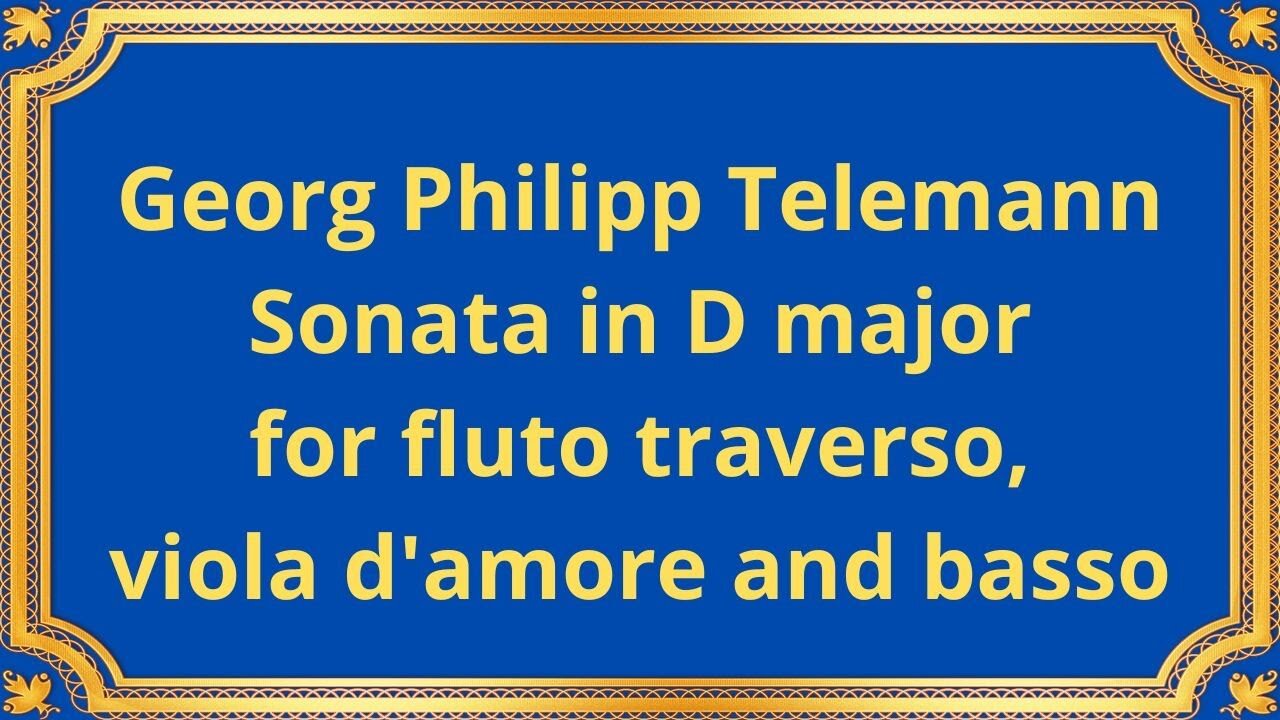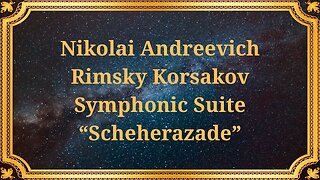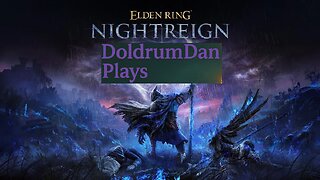Premium Only Content

Georg Philipp Telemann Sonata in D major for fluto traverso, viola d'amore and basso
#GeorgPhilippTelemann #ClassicalMusic #BaroqueMusic #ChamberMusic #FlautoTraverso #ViolaDAmore #MusicComposition #MusicHistory #MusicPerformance #InstrumentalEnsemble
Gustav Schech, transverse flute
Emil Seiler, viola d'amore
Fritz Neumeyer, harpsichord
August Wenzinger, viola da gamba
Georg Philipp Telemann's Sonata in D major for flauto traverso, viola d'amore, and basso is a captivating example of Baroque chamber music. Composed by the prolific German composer and musician Georg Philipp Telemann, this piece showcases the beauty and intricacy of Baroque musical composition.
The sonata is scored for three instruments: the flauto traverso (transverse flute), viola d'amore (a bowed string instrument), and basso continuo (usually played by a harpsichord and cello or bassoon). The combination of these instruments creates a rich tapestry of sound, allowing for a dynamic interplay between the flute and viola d'amore, supported by the harmonic foundation of the basso continuo.
Telemann's Sonata in D major is characterized by its elegant melodies, contrapuntal textures, and expressive ornamentation typical of the Baroque era. The first movement, marked "Grave," introduces the listener to the solemn and majestic nature of the piece, with the instruments engaging in a dialogue that sets the stage for the musical journey ahead. This movement often features intricate ornamentation and virtuosic passages for the flute and viola d'amore, showcasing the technical prowess of the performers.
The second movement, typically marked "Allegro" or "Vivace," contrasts the solemnity of the first movement with its lively and spirited character. Here, the instruments engage in a playful exchange of musical ideas, demonstrating Telemann's mastery of counterpoint and harmonic invention. The interplay between the flute and viola d'amore creates a sense of musical conversation, with the basso continuo providing a solid foundation for the melodic and contrapuntal elements.
The final movement, often marked "Allegro" or "Presto," brings the sonata to a thrilling conclusion, showcasing the virtuosity of the performers and the exuberant nature of Baroque music. This movement is characterized by its energetic rhythms, engaging melodies, and intricate interplay between the instruments, culminating in a triumphant and satisfying resolution.
Overall, Telemann's Sonata in D major for flauto traverso, viola d'amore, and basso exemplifies the elegance, sophistication, and expressive power of Baroque chamber music. Its combination of virtuosity, contrapuntal complexity, and emotive depth makes it a beloved and enduring work within the classical music repertoire, captivating audiences with its timeless beauty and musical ingenuity.
You have the opportunity to support the channel:
https://destream.net/live/RadSiarAl/donate
https://www.buymeacoffee.com/6355radsiaral
-
 41:38
41:38
Classical music_Music Inspiration
1 month agoNikolai Andreevich Rimsky Korsakov Symphonic Suite “Scheherazade”
1721 -
 32:50
32:50
Uncommon Sense In Current Times
16 hours agoIs War Ever Just? Frank Turek Explains Just War Theory & Christian Ethics
4.97K -
 25:57
25:57
DeVory Darkins
1 day ago $10.87 earnedNewsom suffers HUMILIATING SETBACK after FATAL Accident as Trump leads HISTORIC meeting
25K116 -
 LIVE
LIVE
FyrBorne
10 hours ago🔴Warzone M&K Sniping: First Impressions of Black Ops 7 Reveal
324 watching -
 8:16
8:16
MattMorseTV
16 hours ago $7.76 earnedTrump’s name just got CLEARED.
63.4K63 -
 2:01:55
2:01:55
MG Show
20 hours agoPresident Trump Multilateral Meeting with European Leaders; Trump Outlines Putin Zelenskyy Meeting
17K19 -
 LIVE
LIVE
DoldrumDan
1 hour agoCHALLENGE RUNNER BOUT DONE WITH ELDEN RING NIGHTREIGN STORY MODE HUGE GAMING
62 watching -
 10:59
10:59
itsSeanDaniel
1 day agoEuropean Leaders INSTANTLY REGRET Disrespecting Trump
12.1K14 -
 16:43
16:43
GritsGG
16 hours agoThey Buffed This AR & It Slaps! Warzone Loadout!
12.3K1 -
 2:05:30
2:05:30
Side Scrollers Podcast
20 hours agoEveryone Hates MrBeast + FBI Spends $140k on Pokemon + All Todays News | Side Scrollers Live
106K11